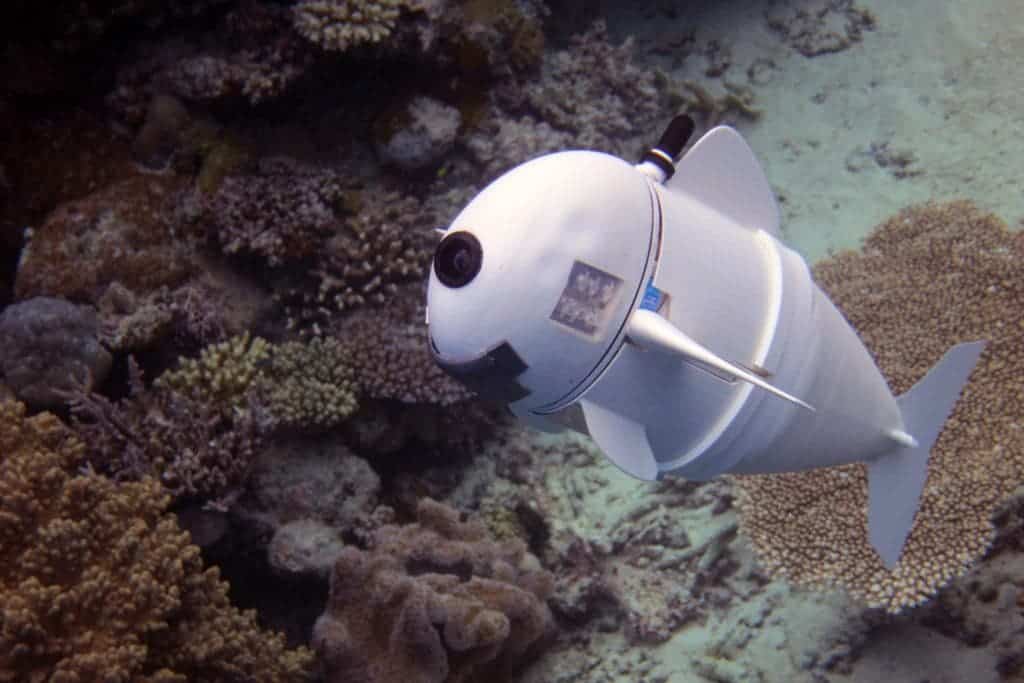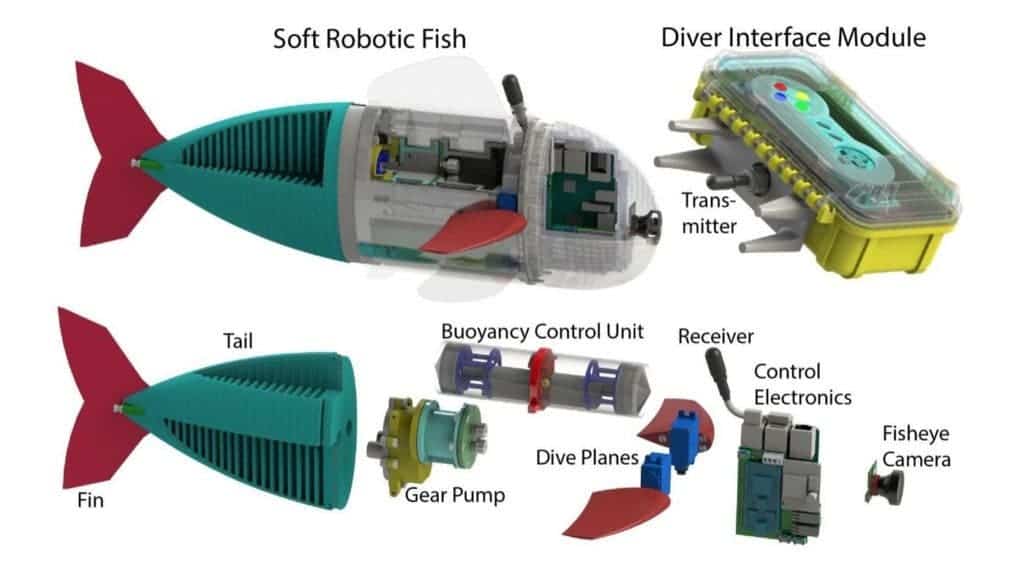MIT has designed and built a soft-bodied robot that looks and swims exactly like a fish. It’s so realistic that even real fish in Fiji are falling for it.

Designing an agile submersible robot that can mimic the natural motion of aquatic wildlife has always proven challenging. Where others have failed, however SoFi — short for Soft Robotic Fish — works so well that even the fish swimming in coral reefs around the Pacific island of Fiji were duped into thinking it was one of their own.
The robot is 47 centimeters long (18 in.) and can handle depths of up to 18 meters (59 ft.). It uses smooth, undulating motions to swim at speeds of half its body length per second, controlled by a nearby diver using an acoustic communication modem, as described in a recent paper published in Science Robotics.
SoFi’s undulating tail motion is controlled by a hydraulic pump that moves water. On the inside, electronics like a Linux computer or its fisheye lens are stored in watertight compartments placed in the robot’s head.
The biggest challenge was devising an adjustable buoyancy system to enable the bot to easily swim at different depths without floating to the surface or sinking to the seafloor. Communication between the diver’s controller and the robot’s computer was also tricky, since radio frequencies typically used on land don’t work underwater. The MIT researchers led by Daniela Rus, director of the Computer Science and Artificial Intelligence Laboratory, solved all of these conundrums. They even got creative and used a Nintendo controller to relay ultrasonic instructions to the robot from as far as 10 meters (6.4 ft.) away.

Robotic fish like SoFi could prove to be essential to understanding and protecting marine life. Human activity and climate change are putting increasing strain on marine wildlife, and scientists often have to get their hands literally wet on site to assess the damage and resilience of ecosystems.

ZME Science often publishes stories about ambitious missions in search for extraterrestrial life to far-off worlds like Mars or Jupiter’s moon Europa. However, the truth is there’s a whole unexplored, alien-like world waiting to be discovered right in our backyards. Scientists estimate that there are more than 1 million marine species but only about 250,000 have been formally described in the scientific literature over the centuries. Those figures exclude microbes, which estimates place at up to 1 billion kinds, according to the Census of Marine Life. SoFi and the next-generation of aquatic bots that will follow will help us finally peek into the secret life of underwater creatures.






